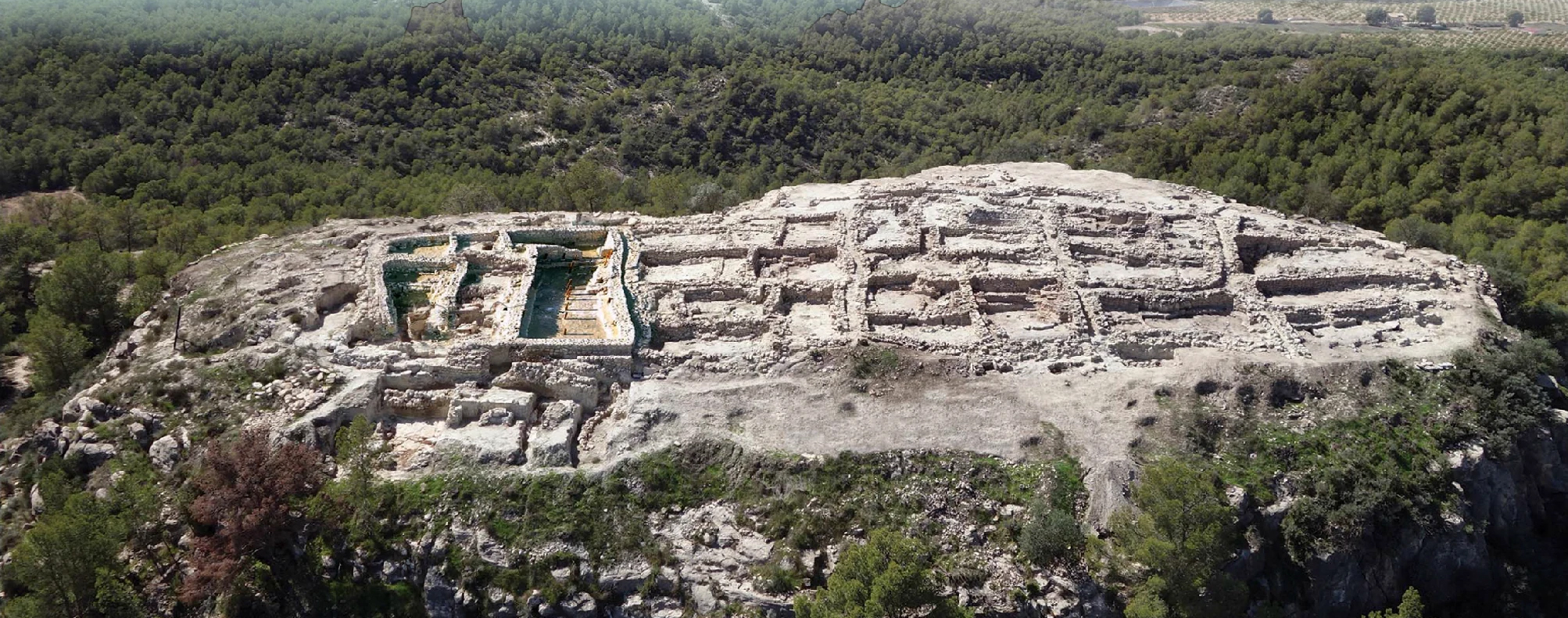La Almoloya on:
[Wikipedia]
[Google]
[Amazon]
La Almoloya is an archaeological site in the southeast corner of the 

 .
The site includes the find of what is described as an "especially rich" grave 38, which was excavated beginning in 2014. It contains the skeletal remains of a woman and a man. The vast majority of the grave goods are associated with the woman; it contains numerous
.
The site includes the find of what is described as an "especially rich" grave 38, which was excavated beginning in 2014. It contains the skeletal remains of a woman and a man. The vast majority of the grave goods are associated with the woman; it contains numerous
"Emblems and spaces of power during the Argaric Bronze Age at La Almoloya, Murcia,"
''Antiquity'',
3D reconstruction of La AlmoloyaThe silver diadem from La Almoloya, 'The Bronze Age treasure that could rewrite history' (BBC 2022)
{{Authority control Archaeological sites in Spain Bronze Age sites in Europe Agaric culture
Iberian Peninsula
The Iberian Peninsula ( ), also known as Iberia, is a peninsula in south-western Europe. Mostly separated from the rest of the European landmass by the Pyrenees, it includes the territories of peninsular Spain and Continental Portugal, comprisin ...
in modern-day Spain. It is a principal site of study for the Bronze Age
The Bronze Age () was a historical period characterised principally by the use of bronze tools and the development of complex urban societies, as well as the adoption of writing in some areas. The Bronze Age is the middle principal period of ...
Argaric culture
The Argaric culture, named from the type site El Argar near the town of Antas, Andalusia, Antas, in what is now the province of Almería in southeastern Spain, is an Bronze Age Europe, Early Bronze Age culture which flourished between c. 2200 Ann ...
that flourished from about 2200 BC to 1500 BC and controlled territory in Iberia that is equivalent in size to modern Belgium
Belgium, officially the Kingdom of Belgium, is a country in Northwestern Europe. Situated in a coastal lowland region known as the Low Countries, it is bordered by the Netherlands to the north, Germany to the east, Luxembourg to the southeas ...
.


 .
The site includes the find of what is described as an "especially rich" grave 38, which was excavated beginning in 2014. It contains the skeletal remains of a woman and a man. The vast majority of the grave goods are associated with the woman; it contains numerous
.
The site includes the find of what is described as an "especially rich" grave 38, which was excavated beginning in 2014. It contains the skeletal remains of a woman and a man. The vast majority of the grave goods are associated with the woman; it contains numerous silver
Silver is a chemical element; it has Symbol (chemistry), symbol Ag () and atomic number 47. A soft, whitish-gray, lustrous transition metal, it exhibits the highest electrical conductivity, thermal conductivity, and reflectivity of any metal. ...
grave goods
Grave goods, in archaeology and anthropology, are items buried along with a body.
They are usually personal possessions, supplies to smooth the deceased's journey into an afterlife, or offerings to gods. Grave goods may be classed by researche ...
, including a diadem
A diadem is a Crown (headgear), crown, specifically an ornamental headband worn by monarchs and others as a badge of Monarch, royalty.
Overview
The word derives from the Ancient Greek, Greek διάδημα ''diádēma'', "band" or "fillet", fro ...
. The couple is buried beneath the floor of a large building. Radiocarbon dating suggests the burial took place at approximately 1700 BC. Remains of a female infant who was a first-degree descendant of the couple was found in a separate grave at the site.
The silver treasure associated with the woman in grave 38 has been valued at tens of thousands of dollars. The graves of other high-ranking Argaric women discovered at the site also contained silver treasure, suggesting they may have had powerful political status in the society.
According to Lull et al., the building above the grave may be one of the earliest Bronze Age palaces identified in Western Europe.Lull et al."Emblems and spaces of power during the Argaric Bronze Age at La Almoloya, Murcia,"
''Antiquity'',
Cambridge University Press
Cambridge University Press was the university press of the University of Cambridge. Granted a letters patent by King Henry VIII in 1534, it was the oldest university press in the world. Cambridge University Press merged with Cambridge Assessme ...
, 11 March 2021 It has been described as a large hall, with benches built into the sides, a podium in front of a hearth for heat and lighting, and seating for 50 people. Unique among the hundreds of buildings excavated in the study of El Argar culture, the hall appears to have been a place for the conduct of politics.
References
External links
3D reconstruction of La Almoloya
{{Authority control Archaeological sites in Spain Bronze Age sites in Europe Agaric culture